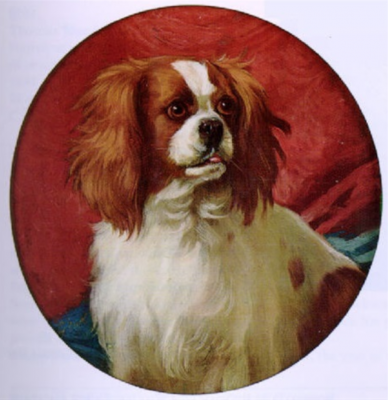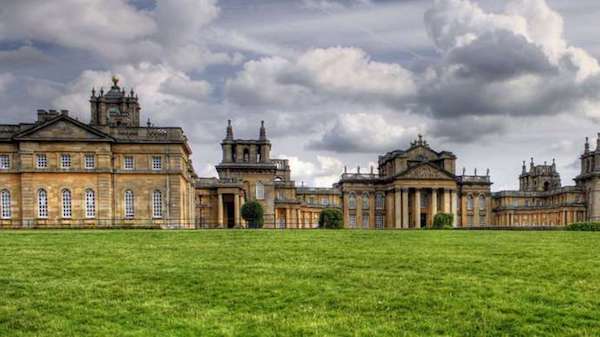
Up until Charles II, toy spaniels were black and tan, but we know that other colors did come along, and this is the tale about the Blenheim.
John Churchill, a famous soldier and diplomat, was made an earl in 1689, and thirteen years later, he became the first Duke of Marlborough. He was gifted an estate built by the English Parliament which he named Blenheim in honor of his victory at the battle of Blenheim, and it would become the family seat of the Marlboroughs. Today, the estate is regarded as the finest example of truly Baroque architecture in Great Britain.

Blenheim Palace
There, the Duke and his wife kept red and white King Charles type spaniels, and many were used for hunting, dogs the duke had recorded as being able to keep up with a trotting horse. There’s a bit more to the story.
During the early part of the 18th century, the Duke received as a gift from China a pair of red and white Cocker Spaniels, dogs that would be the foundation of his subsequent breedings (and the predecessors to the Cavalier and English Toy). We know this by the notes left behind by Edward C. Ash. Over time, the dogs would be crossed with Cockers and Springers which intensified sporting instincts still seen in those breeds today. The dukes of Marlborough bred these red and white dogs, the Blenheim variety, for generations, and in 1800, Sir Walter Scott himself said that the Duke of Marlborough’s Blenheims were the smallest and best cockers in England.
Because of this influence, the red and white variety of the King Charles Spaniel, English Toy Spaniel, and Cavalier King Charles Spaniel became known as the Blenheim. These dogs often have a thumb mark known as the “Blenheim Spot” that appears on the top center of the skull.
Image: A Blenheim Cavalier King Charles spaniel in Oil on Board by George Earl (British, 1824–1908)
